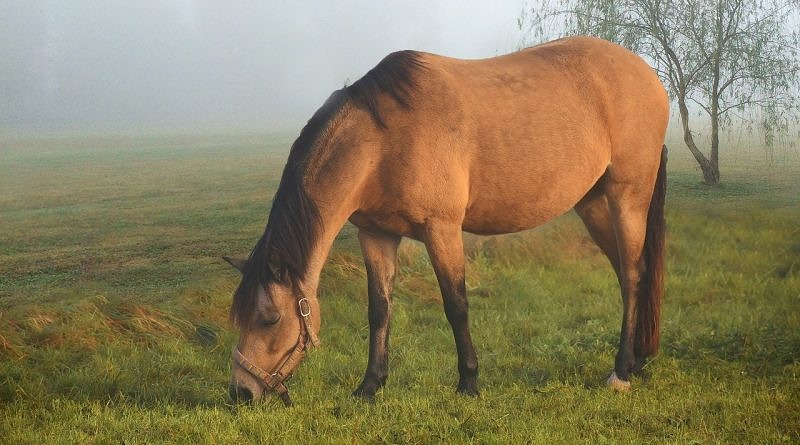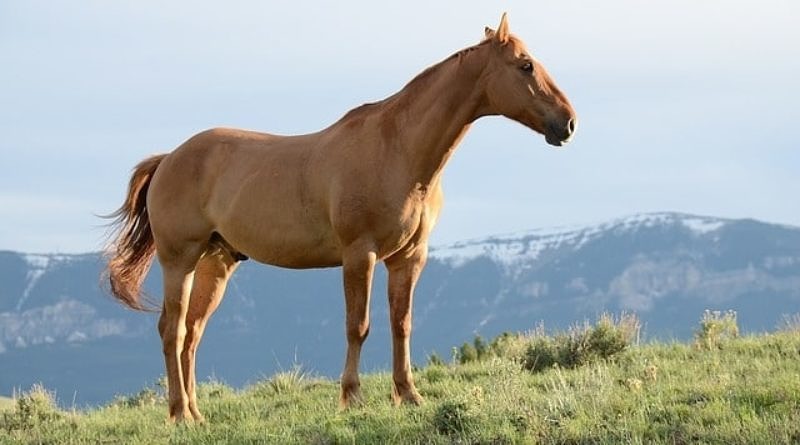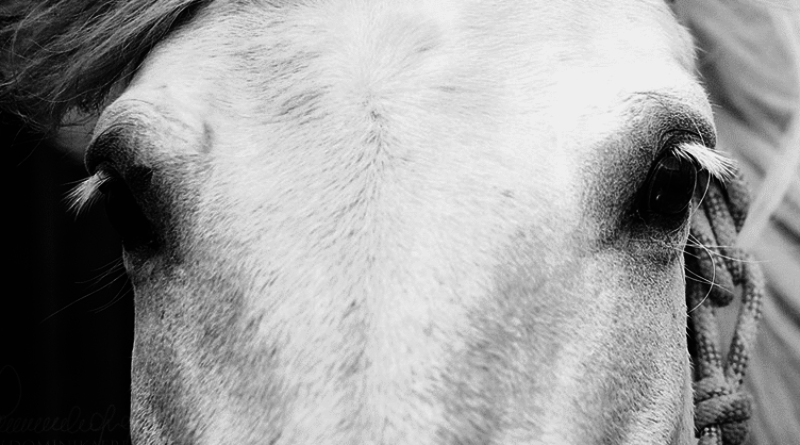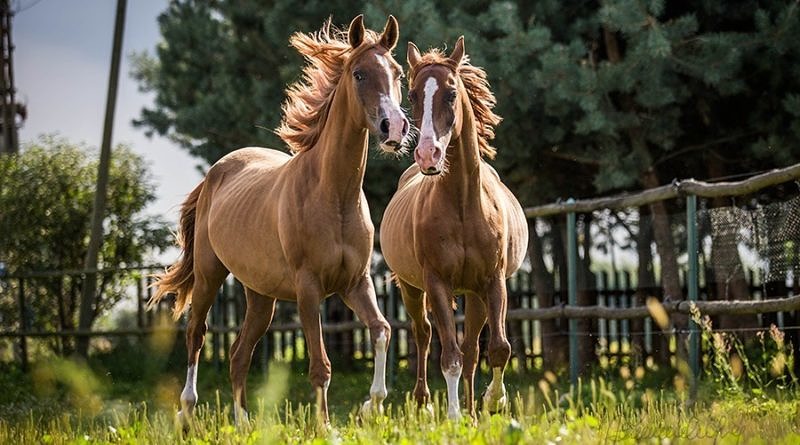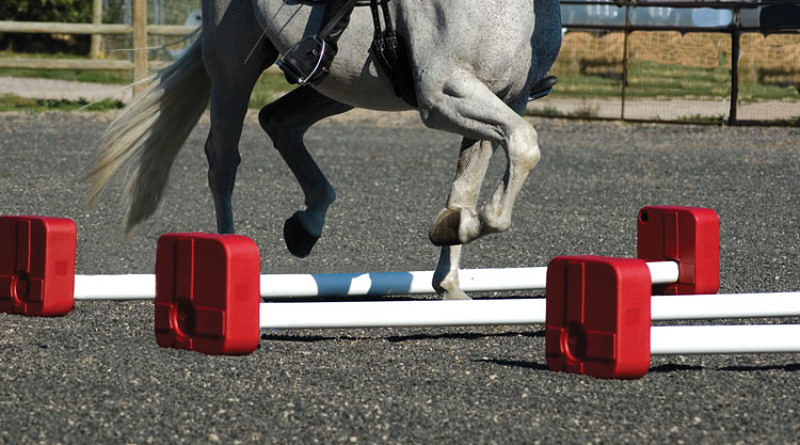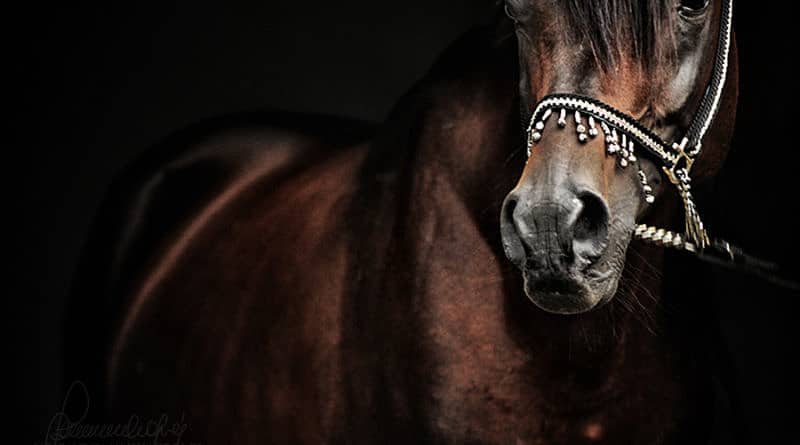What is the difference between a dun and a buckskin?
Do you know if your horse is really dun or buckskin? Learn why there’s a difference and how you can tell.
Have you ever wondered what the difference is between a dun horse and a buckskin horse?
These two terms are frequently confused and a very common mistake is to use the word ‘dun’ to describe a buckskin. This is so deeply rooted that even official papers and passports will often use the wrong terms.
So what is a buckskin?
A buckskin horse will typically have a pale cream to golden tan body colour (the colour of buck skin leather) with black points (mane/tail and legs). Their skin and eyes are also dark.
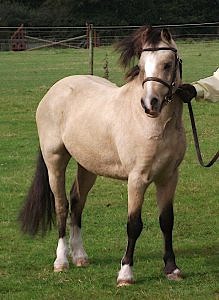
If you look at a buckskin carefully, you may notice that they look a lot like a bay horse except that all the areas that are normally a rich red-brown colour are diluted to tan. And that is exactly what a buckskin horse is – a bay horse where the red pigmented areas have been diluted, leaving the black areas the same as they would be on a bay.
The gene responsible for this is the cream gene. A horse can have one or two copies of cream. If they have one copy, any red areas are diluted but any black areas remain unaffected. If they have two copies, both black and red pigmented areas are diluted.
Because of this effect, cream is called a ‘dilution’ gene or modifier. It changes – modifies – how each of the three base colours (black, bay, and chestnut) appear.
You may be wondering then, if buckskin is bay with one copy of cream, what happens if you add one copy of cream to a black or chestnut?
Well if you think about it, a black horse won’t be affected by a single copy of cream because black horses are black all over and black won’t be diluted… These horses are called smoky black and they cannot be told apart from a true black horse without genetic testing or deducing the genotype from the horse’s parents or offspring.
A chestnut horse, on the other hand, is red all over. So when a chestnut horse carries a copy of cream, the result is palomino! The mane and tail of a palomino is paler than the body colour simply because the hair is longer in those areas, resulting in the existing pigment being that bit more spread out.
What about if the horse has two copies of cream?
Horses that carry two copies of cream have both their red and black pigment diluted. This results in a pale cream to almost white coat with pink skin and blue eyes.
The three possibilities with the three base colours are: bay diluted to perlino, black to smoky cream, and chestnut to cremello. These three colours overlap so much in appearance that it isn’t truly possible to tell them apart just by looking.
Most horses referred to as ‘dun’ in the UK are in fact buckskin and carry cream. This is true of Welsh ponies and cobs where cream dilutes are popular, as well as Connemaras and horses with related lineages. This is why many of these ‘dun’ horses come from lines that also produce palominos.
Well, what is dun then?
When people mistakenly call buckskin horses ‘dun’, they are specifically talking about a bay dun horse.
Bay duns have a diluted coat colour that looks similar to that of a buckskin, with the same black points (mane/tail and legs) and dark skin and eyes.
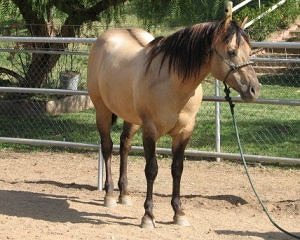
However, unlike the majority of buckskins, duns have some additional characteristics that set them apart. These include a darker ‘dorsal’ stripe that runs down their back and clearly extends into the tail and they also often have visible leg barring. Other characteristics common to some duns – but not all – include a stripe across the shoulders and a darker ‘mask’ on the face.
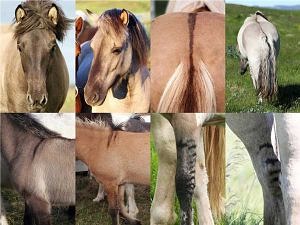
Like cream, dun can interact with each of the base colours. But unlike cream where a single copy produces a different outcome to two copies, it only takes a single copy of dun to see the full effect.
Both black and red pigment is affected by dun – ‘grulla’ is dun on a black base and ‘red dun’ is dun on a chestnut base. It just so happens that one type of dun – bay dun – looks quite similar to a buckskin, which is where the confusion comes from.
Though we often refer to dun as a dilution gene or modifier, this is technically a mischaracterisation. The form of the dun gene that causes a horse to look ‘dun’ is actually the original form of the gene, and would have been found in the ancestors of all horses. This is also called the ‘wild type’.
Dun is so ancient that a very similar allele is responsible for the pattern seen in zebras and is common to wild asses and found in donkeys as well.
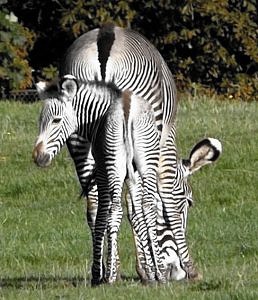
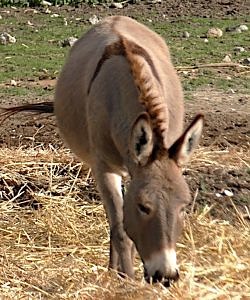
Because of this, the set of characteristics that are caused by dun – the crisp dorsal stripe, leg barring etc – are referred to collectively as ‘primitive markings’.
Despite how widespread the dun factor is among equids, it has been bred out of many popular modern horse breeds including some such as the Connemara whose buckskin members are almost always incorrectly referred to as ‘dun’! Dun is more common in a select few native breeds such as the Shetland and Highland pony.
Complications
When you spend time learning about horse colour genetics, what quickly becomes apparent is that nothing is ever that simple…
To add to the confusion regarding dun versus buckskin, some of the characteristics you may be looking for to distinguish between them aren’t completely reliable.
Many horses that are not genetically dun still have a dorsal stripe down their backs. This phenomenon is colloquially referred to as ‘countershading’ (though this isn’t quite correct – a topic for another time). These dorsal stripes usually differ from true primitive markings because they do not extend fully into the tail and usually aren’t as crisp. In addition, most horses that are not genetically dun, though they may have a dorsal stripe, will not have other primitive markings such as leg barring.
However, there is an additional form of the dun gene that causes primitive markings to appear on an otherwise undiluted or only slightly diluted coat. This has been named ‘non-dun 1’ (nd1). This was a relatively recent discovery, though nd1 itself isn’t new and has been found in many breeds already.
To add to the confusion, horses can be both dun and carry cream at the same time… Not all possible combinations have catchy names but a buckskin that is also dun is termed a ‘dunskin’ and a palomino that is also dun is called a ‘dunalino’!
In some cases, the only truly reliable way to know whether a horse is dun or buckskin is to have their DNA tested by a genetics lab. However in many cases, even if the horse’s appearance is misleading, you can still make an educated guess based on their breed and pedigree.
If reading this sparked your curiosity about genetics and you want to learn more to really understand genes and inheritance, have a look at our multipart introduction to genetics series – beginning with Part 1: Genes are like recipes for blueberry muffins!

